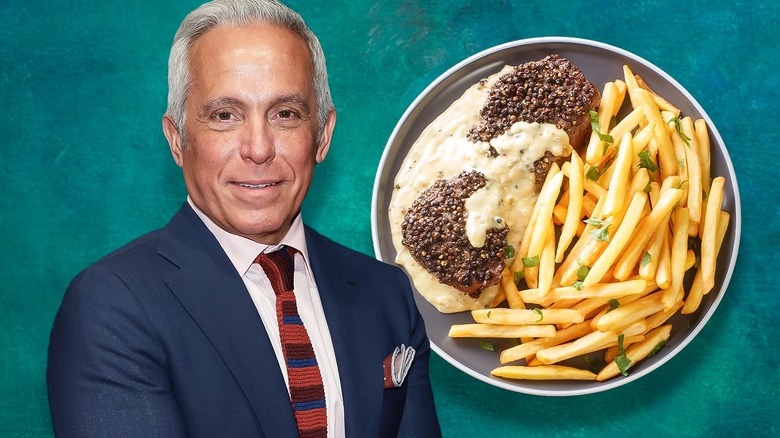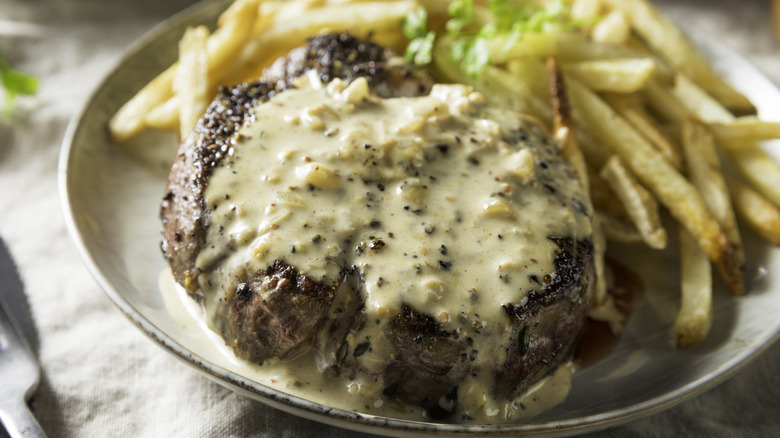Geoffrey Zakarian Shares His Tips For The Most Flavorful Steak Au Poivre - Exclusive
Few foods occupy such a unique position in the culinary zeitgeist as steak au poivre. The meal is a classically French dish, but it can be found widely in steakhouses across America, whether Francophilic or not. It's risen, fell, and risen in popularity. Yet, for all the time it has spent in the limelight, it's not easily replicated. Differentiated by a pepper crust and rich sauce, steak au poivre requires quality ingredients, but it demands skilled technique. It can be a benchmark tell of whether you're noshing in a quality steakhouse. And making it at home? That's a different kind of challenge.
Geoffrey Zakarian is a chef who knows the mark of a fine steak au poivre. Now a titan of the New York City dining scene, he rose to prominence slinging high-end steaks and earning stars and accolades for his work. When Tasting Table sat down with Zakarian for an exclusive interview, his key tips for making steak au poivre were top of mind. Some of the chef's suggestions were fairly straightforward, such as making sure to use the right cut (New York strip), ensuring you get a good sear, and giving the steak time to rest.
One crafty thing Zakarian says to keep in mind, however, is knowing where the pepper flavor comes from. "You really need to understand that a traditional pepper steak has pepper on the outside," he said, "but really green peppercorn is the base of the sauce. It's not all just cracked black pepper."
Steak au poivre is the sum of its peppercorns
If it feels counterintuitive to go light on the signature coating of a dish that literally translates to "steak and pepper," know that you're not alone. Whether or not black pepper should be put on your steak before searing — and how much — is a hotly contested question in the world of steak cooking. While you certainly shouldn't leave the spice completely out of the process, searing a steak with too heavy of a pepper coating can lead to burnt, bitter flavors. Instead, it's best to use a light hand on the external coating and instead strengthen the desired flavor with a green peppercorn sauce.
Green pepper is great for steak au poivre sauce for many reasons. It is a type of peppercorn with a vegetal, mineral flavor that works counter to black peppercorns by creating bright and uplifting notes of spice. This, in turn, balances the depth and pungency of the spices coating the steak and gives layers to the peppery profile. Green pepper also has tangy notes that slot in alongside shallot, brandy, and butter — other key ingredients in steak au poivre sauce.
Once you've rounded out the pepper flavor through the sauce, Zakarian insists that you give your steak au poivre some time: "It's got to rest in the sauce for a second," he said. "If you cut it unrested, all the blood from the inside of the steak will look weird on the sauce."

